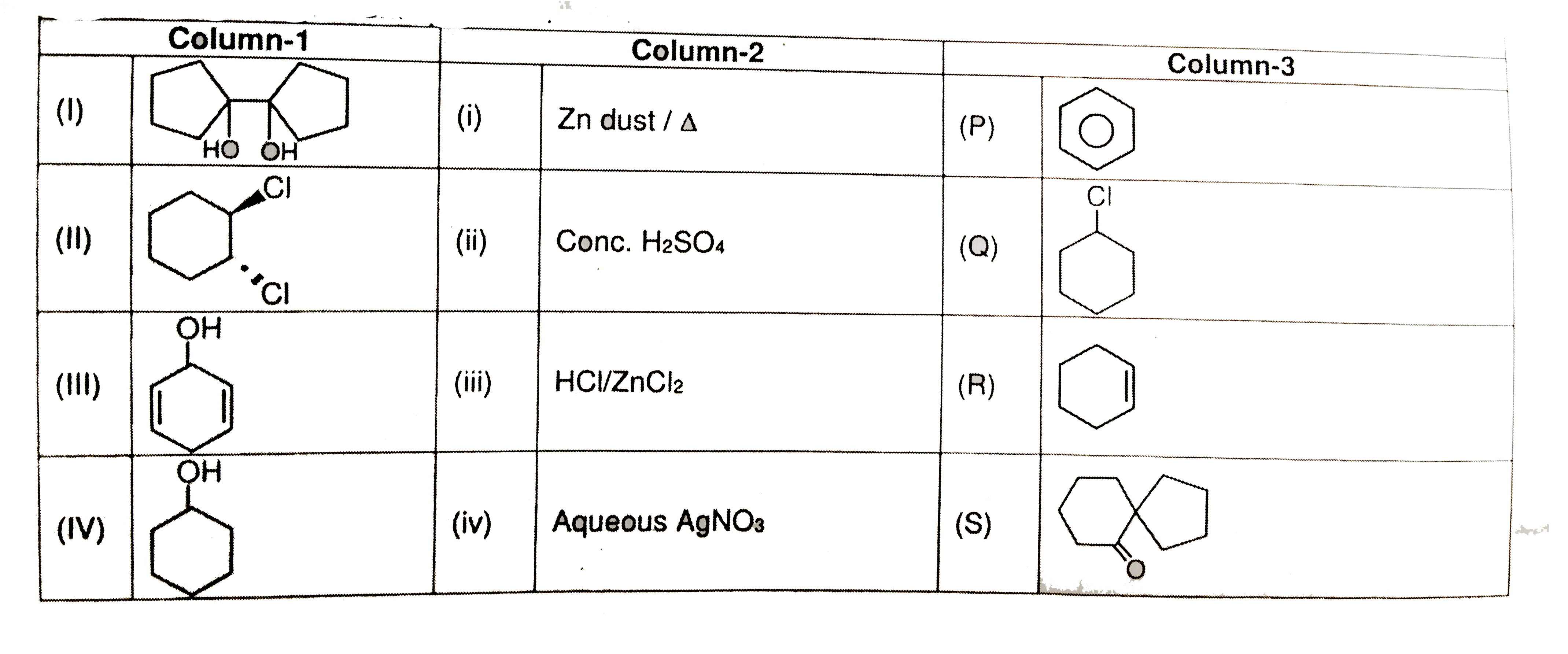State one condition under which a bimolecular reaction may be kinetically of first order reactions.
When both reactants have same concentration
when one of the reacting species is in large excess
when the reaction is at equilibrium
when the activation energy of reaction is less
The correct Answer is:B
To determine the condition under which a bimolecular reaction may be kinetically of first order, we can follow these steps:
1. Understanding Reaction Orders:
- A bimolecular reaction typically involves two reactants and is expected to depend on the concentration of both reactants. The rate law for a bimolecular reaction is generally expressed as:
Rate=k(A)(B)
where A and B are the concentrations of the reactants, and k is the rate constant.
2. Identifying Pseudo Unimolecular Reactions:
- A bimolecular reaction can appear to be first order under certain conditions. This occurs in what are known as pseudo unimolecular reactions. In these reactions, one of the reactants is present in a large excess compared to the other.
3. Condition for Kinetic First Order:
- When one of the reactants is in a large excess, its concentration remains relatively constant throughout the reaction. This means that the change in concentration of this reactant is negligible compared to the other reactant.
4. Simplifying the Rate Equation:
- If we denote the reactant in excess as B and the other reactant as A, the rate law can be simplified:
Rate=k(A)(B)≈k′(A)
where k′=k(B) is a new rate constant that incorporates the constant concentration of B. Thus, the reaction behaves as a first-order reaction with respect to A.
5. Example:
- A classic example is the hydrolysis of an ester in water. If water is in large excess, the reaction can be represented as:
Ester+Water→Acid+Alcohol
Here, since water is in excess, the reaction appears to be first order with respect to the ester.
Conclusion:
The condition under which a bimolecular reaction may be kinetically of first order is when one of the reactants is present in large excess.
- A bimolecular reaction typically involves two reactants and is expected to depend on the concentration of both reactants. The rate law for a bimolecular reaction is generally expressed as:
Rate=k(A)(B)
where A and B are the concentrations of the reactants, and k is the rate constant.
- A bimolecular reaction can appear to be first order under certain conditions. This occurs in what are known as pseudo unimolecular reactions. In these reactions, one of the reactants is present in a large excess compared to the other.
- When one of the reactants is in a large excess, its concentration remains relatively constant throughout the reaction. This means that the change in concentration of this reactant is negligible compared to the other reactant.
- If we denote the reactant in excess as B and the other reactant as A, the rate law can be simplified:
Rate=k(A)(B)≈k′(A)
where k′=k(B) is a new rate constant that incorporates the constant concentration of B. Thus, the reaction behaves as a first-order reaction with respect to A.
- A classic example is the hydrolysis of an ester in water. If water is in large excess, the reaction can be represented as:
Ester+Water→Acid+Alcohol
Here, since water is in excess, the reaction appears to be first order with respect to the ester.
The condition under which a bimolecular reaction may be kinetically of first order is when one of the reactants is present in large excess.
Topper's Solved these Questions
- BOOK - NCERT FINGERTPS ENGLISHCHAPTER - CHEMICAL KINETICSEXERCISE - Higher Order Thinking Skills9videos
CHEMICAL KINETICS
- BOOK - NCERT FINGERTPS ENGLISHCHAPTER - CHEMICAL KINETICSEXERCISE - NCERT EXEMPLAR PROBLEMS17videos
CHEMICAL KINETICS
- BOOK - NCERT FINGERTPS ENGLISHCHAPTER - BIOMOLECULESEXERCISE - Assertion And Reason15videos
BIOMOLECULES
- BOOK - NCERT FINGERTPS ENGLISHCHAPTER - CHEMISTRY IN EVERYDAY LIFE EXERCISE - NCERT Exemplar15videos
CHEMISTRY IN EVERYDAY LIFE
Similar Questions
Knowledge Check
- Question 1 - Select One
Rate constant in case of first order reaction is
Ainversely proportional to the concentration unitsBindependent of concentration unitsCdirectly proportional to concentration unitsDinversely proportional to the square of concentration units.
For the first order reaction,
View SolutionGive one example of pseudo first order reaction.
View Solution
The bimolecular reaction is represented by :View SolutionGive an example of pseudo first order reaction.
View SolutionGive an example of pseudo first order reaction.
View SolutionGive an example of pseudo first order reaction.
View SolutionE2 reaction (Elimination bimolecular reaction)
View Solution

